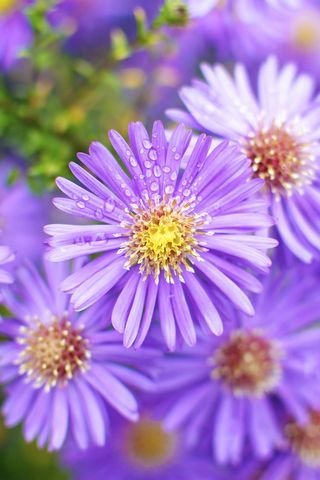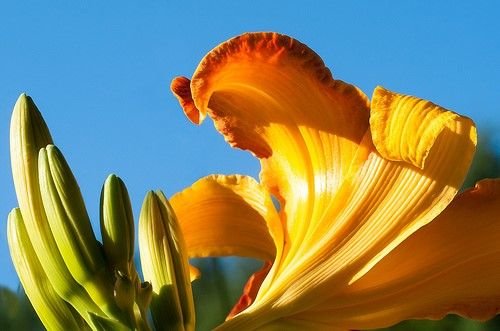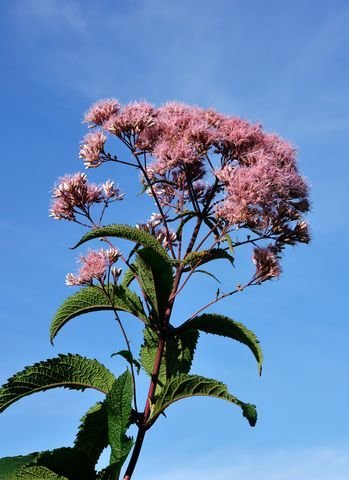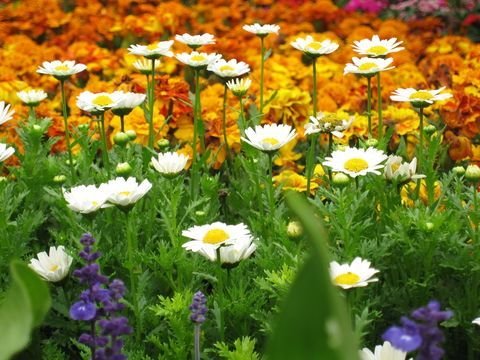Common Purslane
Common Purslane (Portulaca oleracea)
Also known as Purslane, Pusley, Verdolaga, Green Purslane, Garden Purslane, Wild Portulaca and Pursley.
This pesty annual weed is from the Portulacaceae family which is Purslane. Originating from Europe, it has naturalized in the United States (especially eastern), Canada and much of the rest of the world. Although it grows cultivated as a welcome food source for many around the world, some states have declared this weed to be noxious and prohibit it from being grown.
This genus has about 100 species within it. Most are annuals, some are perennials and all are succulent or semi-succulent allowing them to tolerate droughts. Most species are erect, some are flat and trail.
Common Purslane lays flat, and sprawls out forming thick mats and often stems turn up at ends. These mats grow out 1-2 feet and suffocate other vegetation.


| Photo: Tamifreed |
Stems are thick and green to purplish-red in color. When stressed they can be orange to bright pink. They are fleshy and average 6-12 inches in length and branch out. Stems and leaves are smooth, or glabrous.
Thick rubbery-like leaves alternate off stems and often have rounded tips. Leaves grow about 1/4 to 1-1/4 inch long and there is often a maroon margin around rim of leaf.
From the leaf axils, or where leaves and stems are joined, grow tiny yellow flowers. Flowers have five petals and start blooming in late spring. They bloom for a few hours in morning and only when the sun is shining brightly.
Once hot weather really kicks in, this annual weed begins growing and very quickly. For most areas around the country this would be June. Although it grows in compacted soil types, Purslane prefers sandy, gravelly soils.
Healthy, rich soils help prevent common purslane
from getting established.
This weed is herbaceous, or dies at the end of growing season. It grows back with germinating seeds when growing season starts. Seeds are flattish and black. They develop in bowl shaped pods and when ready, pods open spreading seeds.
When pulling or hoeing weeds it is important to remove all of weed. Stems are fleshy and will remain alive for a long time. Broken weeds will re-root wherever it touches soil. Pull regularly and throw out weeds. If in lawns, mow over so seed is unable to set.
Use a selective post-emergent herbicide. These are recommend if there is not a large infestations and to repeat applications regularly. If there are areas where weed is taking over it's best to till soil and apply herbicide, wait about three weeks and fertilize area. Continue to add rich soil regularly as this will be the best method to control weed from coming back. After removal always apply mulch.
FYI:
- Rose moss (Portulaca grandiflora), a beautiful flowering moss-like annual. It is a very close cousin to common purslane but unlike it's cousin, rose moss is a non-invasive.
Many gardeners love this beautiful flower with red, yellow, white, orange and pink blooms.
- Pigweed is another name given to Common Purslane. It does not refer to the actual weed itself, rather it is a generic term. Pig Weed can translate to Pig Fodder, or food for livestock. This can be many different weeds.
- Worldwide purslane is considered a welcome food source. Both leaves and stems can be eaten raw or cooked.
Related Articles:
Back to Weed Identification
Back from Common Purslane to home page Easy Butterfly Garden
 Copyright © 2010-2022 Easy-Butterfly-Garden.com
Copyright © 2010-2022 Easy-Butterfly-Garden.com
Privacy Policy Disclaimer

Join Easy Butterfly Garden on Facebook
Recent Articles
-
Aster Flower
Jan 08, 16 01:26 PM
The aster flower is an easy plant to grow preferring moist soils. It is low maintenence and produces flowers that attract butterflies and hummingbirds.
-
Daylillies
Sep 27, 15 12:13 PM
Daylillies attract all kinds of butterflies and are a very durable plant, even in winter. Cultivers come in different forms and colors. As beautiful as they are, there is one drawback...
-
Joe Pye Weed
Sep 13, 15 02:11 PM
Joe pye weed looks great in a more casual garden setting. It's not considered invasive but between the many seeds and the fast growing rhizome system, it needs to be controlled.
-
Daisy Flower
Aug 30, 15 03:37 PM
The up-side to the daisy flower is that it is up when the sun is feeding pollinators. The down side is that one particualar species is invasive.
-
This Gardening and Butterfly Websites Sitemap
Aug 16, 15 11:34 PM
This gardening and butterfly websites sitemap for easier navigation.







New! Comments
Have your say about what you just read! Leave me a comment in the box below.